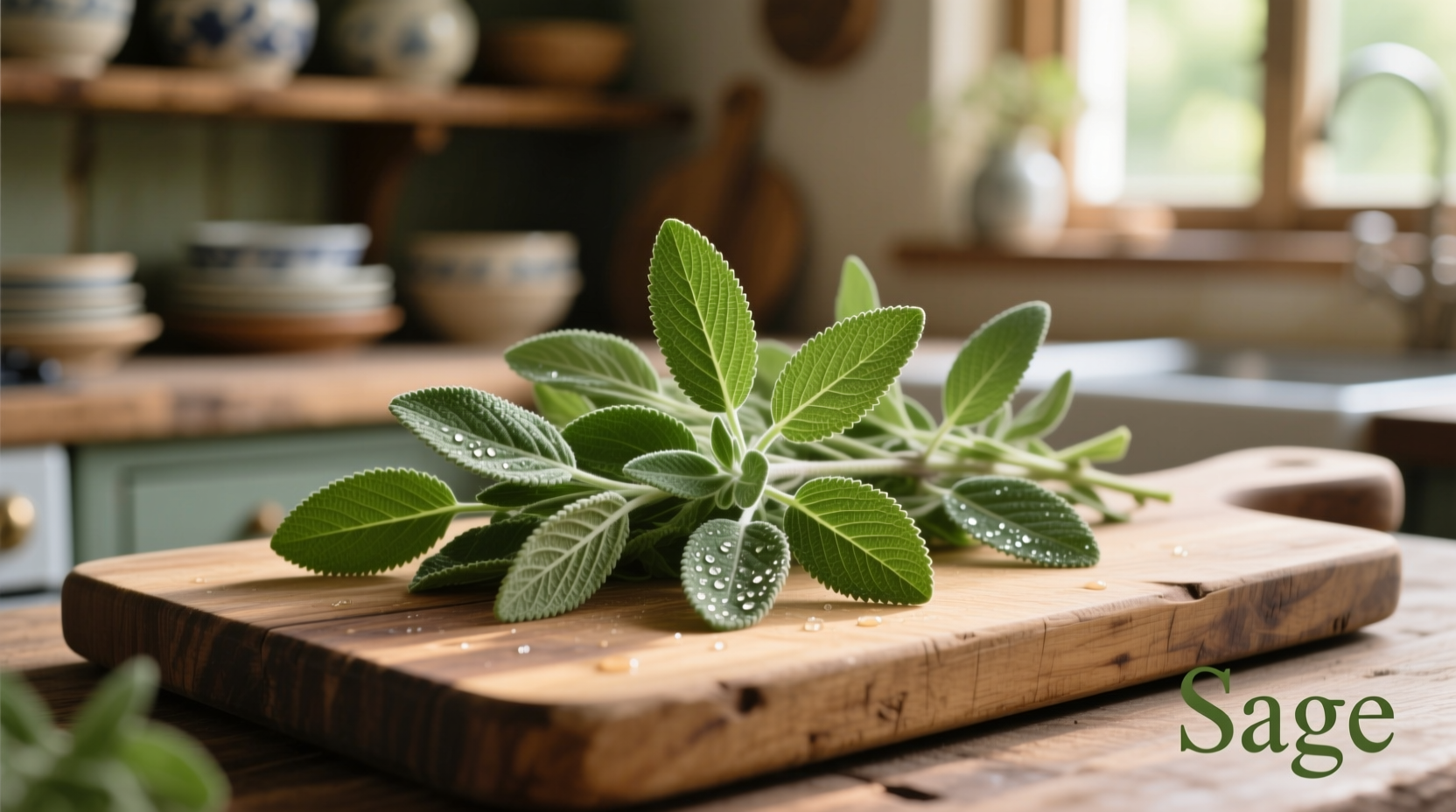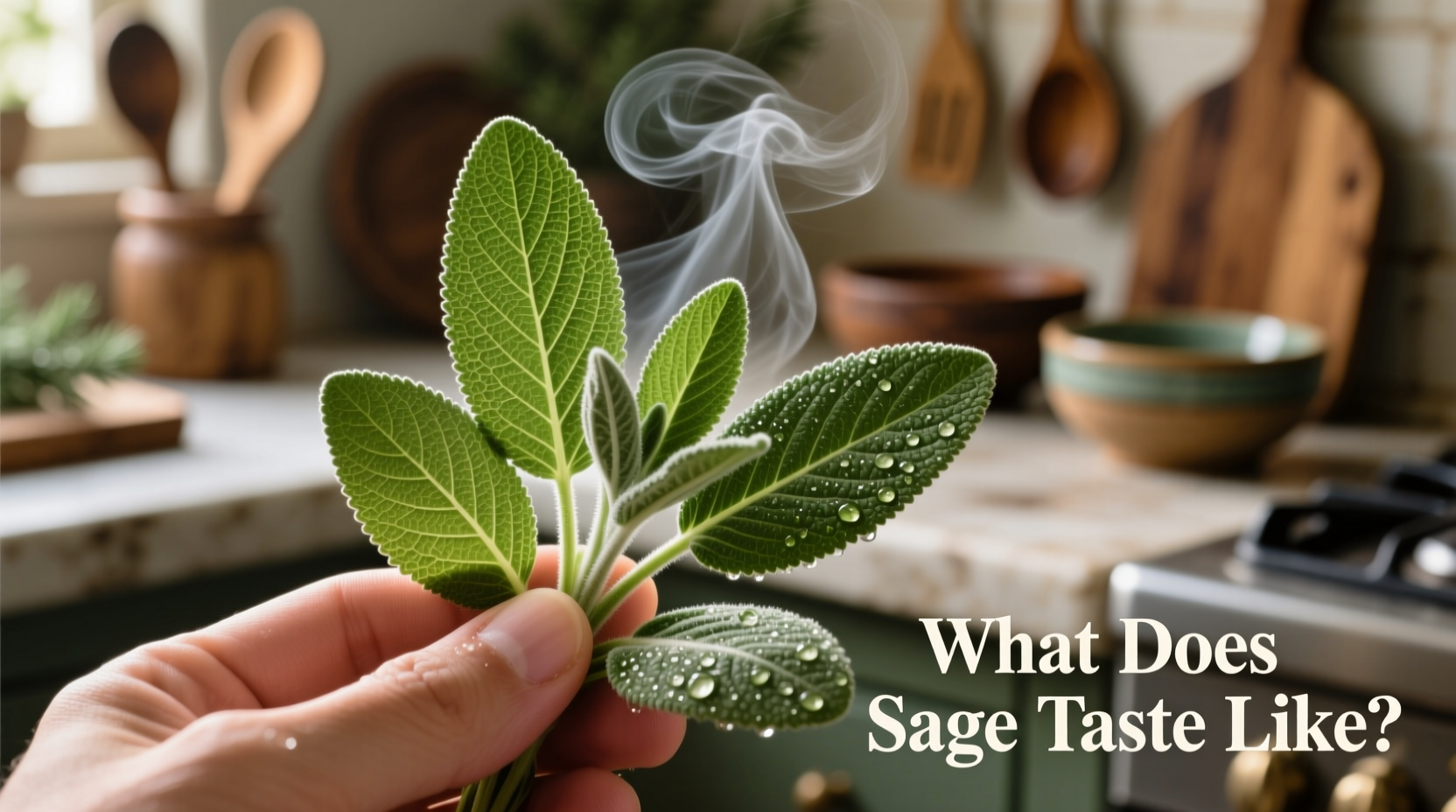Understanding sage's unique flavor profile transforms how you approach autumn and winter cooking. This versatile herb bridges the gap between subtle and bold seasonings, making it indispensable in both traditional and modern cuisine. Let's explore exactly what makes sage taste the way it does and how to maximize its potential in your kitchen.
Breaking Down Sage's Complex Flavor Notes
Sage (Salvia officinalis) delivers a multifaceted taste experience that evolves as you cook with it. The primary flavor components include:
- Earthy base notes - reminiscent of forest floors after rain
- Peppery kick - similar to black pepper but more rounded
- Eucalyptus undertones - providing that distinctive medicinal hint
- Camphor-like qualities - most pronounced in dried sage
- Subtle citrus notes - especially in younger leaves
When sampled raw, fresh sage can seem almost too intense for many palates. But when cooked properly, these elements harmonize beautifully, creating depth without overwhelming other ingredients. The secret lies in understanding how heat transforms sage's chemical compounds - specifically how terpenes like thujone and camphor mellow during cooking.
Fresh vs Dried Sage: Critical Flavor Differences
Choosing between fresh and dried sage dramatically impacts your dish's final flavor. This comparison helps you select the right form for your culinary needs:
| Characteristic | Fresh Sage | Dried Sage |
|---|---|---|
| Flavor intensity | Moderate, brighter notes | Concentrated, more potent |
| Primary flavor notes | Grassy, subtle citrus, mild pepper | Earthy, musty, pronounced camphor |
| Best culinary uses | Finishing dishes, infused oils, delicate sauces | Stuffing, meat rubs, hearty stews |
| Conversion ratio | 1 tablespoon fresh = 1 teaspoon dried | 1 teaspoon dried = 1 tablespoon fresh |
According to research from the Culinary Institute of America's flavor chemistry department, drying concentrates sage's volatile oils by approximately 300%, explaining why dried sage delivers such a more intense experience. This concentration makes dried sage ideal for dishes requiring long cooking times where fresh herbs would lose their character.
How Cooking Transforms Sage's Flavor
Sage's flavor undergoes dramatic changes when exposed to heat. Understanding these transformations helps prevent common mistakes:
- Raw consumption - delivers sharp, almost medicinal notes that many find overpowering
- Quick sautéing - mellow the harsher elements while preserving complexity (ideal for pasta dishes)
- Extended cooking - integrates sage seamlessly into braises and stuffings
- Browning in butter - creates nutty, caramelized notes that define classic sage butter sauce
The University of California's Department of Food Science notes that heating sage above 160°F (71°C) begins breaking down thujone compounds responsible for its medicinal quality, resulting in more rounded, kitchen-friendly flavors. This explains why recipes almost always call for cooking sage rather than using it raw.

Perfect Pairings: What Foods Complement Sage Best
Sage's robust flavor shines when matched with ingredients that can stand up to its intensity:
- Fatty meats - particularly pork, duck, and sausage where sage cuts through richness
- Autumn vegetables - butternut squash, sweet potatoes, and roasted root vegetables
- Cheeses - sharp cheddar, pecorino, and goat cheese
- Beans and legumes - enhances white bean and lentil dishes
- Citrus elements - lemon zest balances sage's earthiness beautifully
Professional chefs often combine sage with complementary herbs like rosemary and thyme in what's known as the "holy trinity" of autumn herbs. The North American Herb and Spice Association confirms this combination creates flavor synergy where the whole becomes greater than the sum of its parts.
Common Sage Mistakes Home Cooks Make
Avoid these frequent errors to maximize sage's potential:
- Overusing fresh sage - its potency means a little goes a long way (start with 1-2 leaves)
- Adding too early in cooking - delicate fresh sage burns easily; add in last 2-3 minutes
- Using dried as direct substitute - remember the 3:1 fresh-to-dried ratio
- Not removing tough stems - they impart bitter flavors during cooking
- Storing improperly - fresh sage lasts only 3-4 days refrigerated; freeze for longer storage
When You Can't Find Sage: Smart Substitutes
While no substitute perfectly replicates sage's unique profile, these alternatives work in a pinch:
- Marjoram - milder cousin with similar earthy notes (use 1.5x amount)
- Thyme - provides earthiness with less medicinal quality
- Poultry seasoning blend - contains sage plus complementary herbs
- Summer savory - peppery alternative for bean dishes
Remember that substitutes work best in cooked applications rather than raw preparations. For authentic Italian brown butter sauce, nothing truly replaces fresh sage - consider this a specialty ingredient worth seeking out.
Practical Sage Usage Tips for Home Cooks
Implement these professional techniques to elevate your cooking:
- Infuse oils - gently heat sage leaves in olive oil for 5 minutes, then strain for subtle flavor
- Create compound butter - mix finely chopped sage with softened butter for immediate flavor boost
- Make sage salt - blend dried sage with flaky sea salt for versatile seasoning
- Enhance roasted vegetables - toss root vegetables with whole sage leaves before roasting
- Perfect pasta sauce - add 4-5 fresh leaves to brown butter sauce with toasted walnuts
These techniques demonstrate what does sage taste like in practical applications, helping you understand how its flavor integrates into finished dishes. Remember that proper usage transforms sage from potentially overpowering to perfectly balanced.











 浙公网安备
33010002000092号
浙公网安备
33010002000092号 浙B2-20120091-4
浙B2-20120091-4